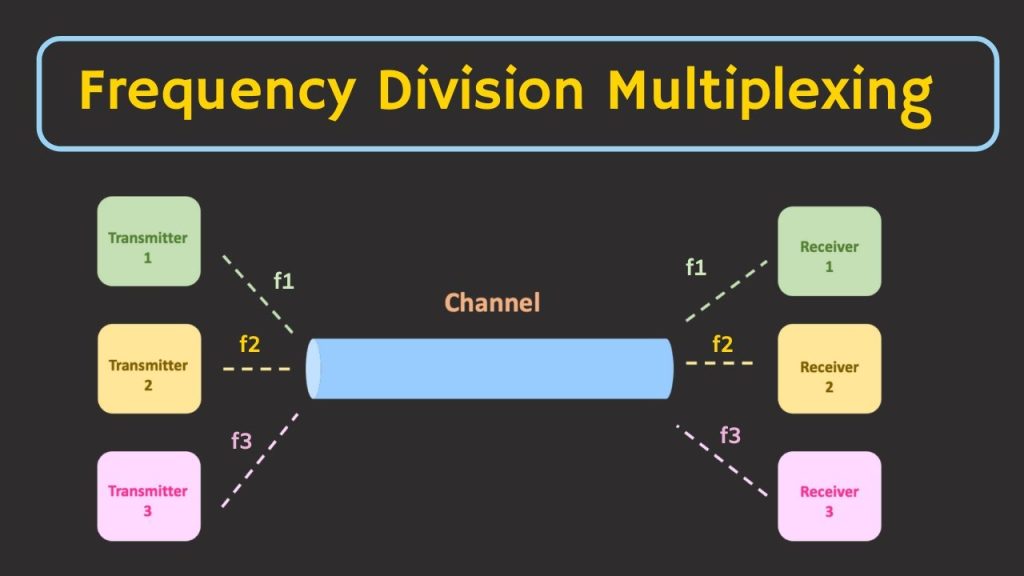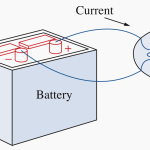Frequency Division uses divide-by-2 toggle flip-flops as binary counters to reduce the frequency of the input clock signal
In the Sequential Logic tutorials we saw how D-type Flip-Flop´s work and how they can be connected together to form a Data Latch.
Another useful feature of the D-type Flip-Flop is as a binary divider, for Frequency Division or as a “divide-by-2” counter. Here the inverted output terminal Q (NOT-Q) is connected directly back to the Data input terminal D giving the device “feedback” as shown below.
Divide-by-2 Counter

It can be seen from the frequency waveforms above, that by “feeding back” the output from Q to the input terminal D, the output pulses at Q have a frequency that are exactly one half ( ƒ ÷ 2 ) that of the input clock frequency. In other words the circuit produces Frequency Division as it now divides the input frequency by a factor of two (an octave).
This then produces a type of counter called a “ripple counter” and in ripple counters, the clock pulse triggers the first flip-flop whose output triggers the second flip-flop, which in turn triggers the third flip-flop and so on through the chain producing a rippling effect (hence their name) of the timing signal as it passes through the chain.
The Toggle Flip-Flop
Another type of digital device that can be used for frequency division is the T-type or Toggle flip-flop. With a slight modification to a standard JK flip-flop, we can construct a new type of flip-flop called a Toggle flip-flop.
Toggle flip flops can be made from D-type flip-flops as shown above, or from standard JK flip-flops such as the 74LS73. The result is a device with only two inputs, the “Toggle” input itself and the negative controlling “Clock” input as shown.
74LS73 Toggle Flip Flop

A “Toggle flip-flop” gets its name from the fact that the flip-flop has the ability to toggle or switch between its two different states, the “toggle state” and the “memory state”. Since there are only two states, a T-type flip-flop is ideal for use in frequency division and binary counter design.
Binary ripple counters can be built using “Toggle” or “T-type flip-flops” by connecting the output of one to the clock input of the next. Toggle flip-flops are ideal for building ripple counters as it toggles from one state to the next, (HIGH to LOW or LOW to HIGH) at every clock cycle so simple frequency divider and ripple counter circuits can easily be constructed using standard T-type flip-flop circuits.
If we connect together in series, two T-type flip-flops the initial input frequency will be “divided-by-two” by the first flip-flop ( ƒ ÷ 2 ) and then “divided-by-two” again by the second flip-flop ( ƒ ÷ 2 ) ÷ 2, giving an output frequency which has effectively been divided four times, then its output frequency becomes one quarter value (25%) of the original clock frequency, ( ƒ ÷ 4 ).
Each time we add another toggle or “T-type” flip-flop to the chain, the output clock frequency is halved or divided-by-2 again and so on, giving an output frequency of 2n where “n” is the number of flip-flops used in the sequence.
Then the Toggle or T-type flip-flop is an edge triggered divide-by-2 device based upon the standard JK-type flip flop and which is triggered on the rising edge of the clock signal. The result is that each bit moves right by one flip-flop. All the flip-flops can be asynchronously reset and can be triggered to switch on either the leading or trailing edge of the input clock signal making it ideal for Frequency Division.
This type of counter circuit used for frequency division is commonly known as an Asynchronous 3-bit Binary Counter as the output on QA to QC, which is 3 bits wide, is a binary count from 0 to 7 for each clock pulse.
In an asynchronous counter, the clock is applied only to the first stage with the output of one flip-flop stage providing the clocking signal for the next flip-flop stage and subsequent stages derive the clock from the previous stage with the clock pulse being halved by each stage.
This arrangement is commonly known as Asynchronous as each clocking event occurs independently as all the bits in the counter do not all change at the same time. As the counter counts sequentially in an upwards direction from 0 to 7. This type of counter is also known as an “up” or “forward” counter (CTU) or a “3-bit Asynchronous Up Counter”. The three-bit asynchronous counter shown is typical and uses flip-flops in the toggle mode. Asynchronous “Down” counters (CTD) are also available.
Truth Table for a 3-bit Asynchronous Up Counter
| Clock Cycle | Output Bit Pattern | ||
| QC | QB | QA | |
| 0 | 0 | 0 | 0 |
| 1 | 0 | 0 | 1 |
| 2 | 0 | 1 | 0 |
| 3 | 0 | 1 | 1 |
| 4 | 1 | 0 | 0 |
| 5 | 1 | 0 | 1 |
| 6 | 1 | 1 | 0 |
| 7 | 1 | 1 | 1 |
Therefore we can see that the output from the D-type flip-flop is at half the frequency of the input, in other words it counts in 2’s. By cascading together more D-type or Toggle Flip-Flops, we can produce a divide-by-2, divide-by-4, divide-by-8, etc. circuit which will divide the input clock frequency by 2, 4 or 8 times, in fact any value to the power-of-2 we want making a binary counter circuit.
Binary Counters
Thus we can see that a counter is nothing more than a specialised register or pattern generator that produces a specified output pattern or sequence of binary values (or states) upon the application of an input pulse signal called the “Clock”.
The clock is actually used for data transfer in these applications. Typically, counters are logic circuits that can increment or decrement a count by one but when used as asynchronous divide-by-n counters they are able to divide these input pulses producing a clock division signal.
Counters are formed by connecting flip-flops together and any number of flip-flops can be connected or “cascaded” together to form a “divide-by-n” binary counter where “n” is the number of counter stages used and which is called the Modulus. The modulus or simply “MOD” of a counter is the number of output states the counter goes through before returning itself back to zero, i.e, one complete cycle.
Then a counter with three flip-flops like the circuit above will count from 0 to 7 ie, 2n-1. It has eight different output states representing the decimal numbers 0 to 7and is called a Modulo-8 or MOD-8 counter. A counter with four flip-flops will count from 0 to 15 and is therefore called a Modulo-16 counter and so on.
An example of this is given as.
· 3-bit Binary Counter = 23 = 8 (modulo-8 or MOD-8)
· 4-bit Binary Counter = 24 = 16 (modulo-16 or MOD-16)
· 8-bit Binary Counter = 28 = 256 (modulo-256 or MOD-256)
· and so on..
The Modulo number can be increased by adding more flip-flops to the counter and cascading is a method of achieving higher modulus counters. Then the modulo or MOD number can simply be written as: MOD number = 2n
4-bit Modulo-16 Counter

Multi-bit asynchronous counters connected in this manner are also called “Ripple Counters” or ripple dividers because the change of state at each stage appears to “ripple” itself through the counter from the LSB output to its MSB output connection. Ripple counters are available in standard IC form, from the 74LS393 Dual 4-bit counter to the 74HC4060, which is a 14-bit ripple counter with its own built in clock oscillator and produce excellent frequency division of the fundamental frequency.
Frequency Division Summary
For frequency division, toggle mode flip-flops are used in a chain as a divide by two counter. One flip-flop will divide the clock, ƒIN by 2, two flip-flops will divide ƒIN by 4 (and so on). One benefit of using toggle flip-flops for frequency division is that the output at any point has an exact 50% duty cycle.
The final output clock signal will have a frequency value equal to the input clock frequency divided by the MOD number of the counter. Such circuits are known as “divide-by-n” counters. Counters can be formed by connecting individual flip-flops together and are classified according to the way they are clocked.
In Asynchronous counters, (ripple counter) the first flip-flop is clocked by the external clock pulse and then each successive flip-flop is clocked by the output of the preceding flip-flop. In Synchronous counters, the clock input is connected to all of the flip-flop so that they are clocked simultaneously.



Comments are closed